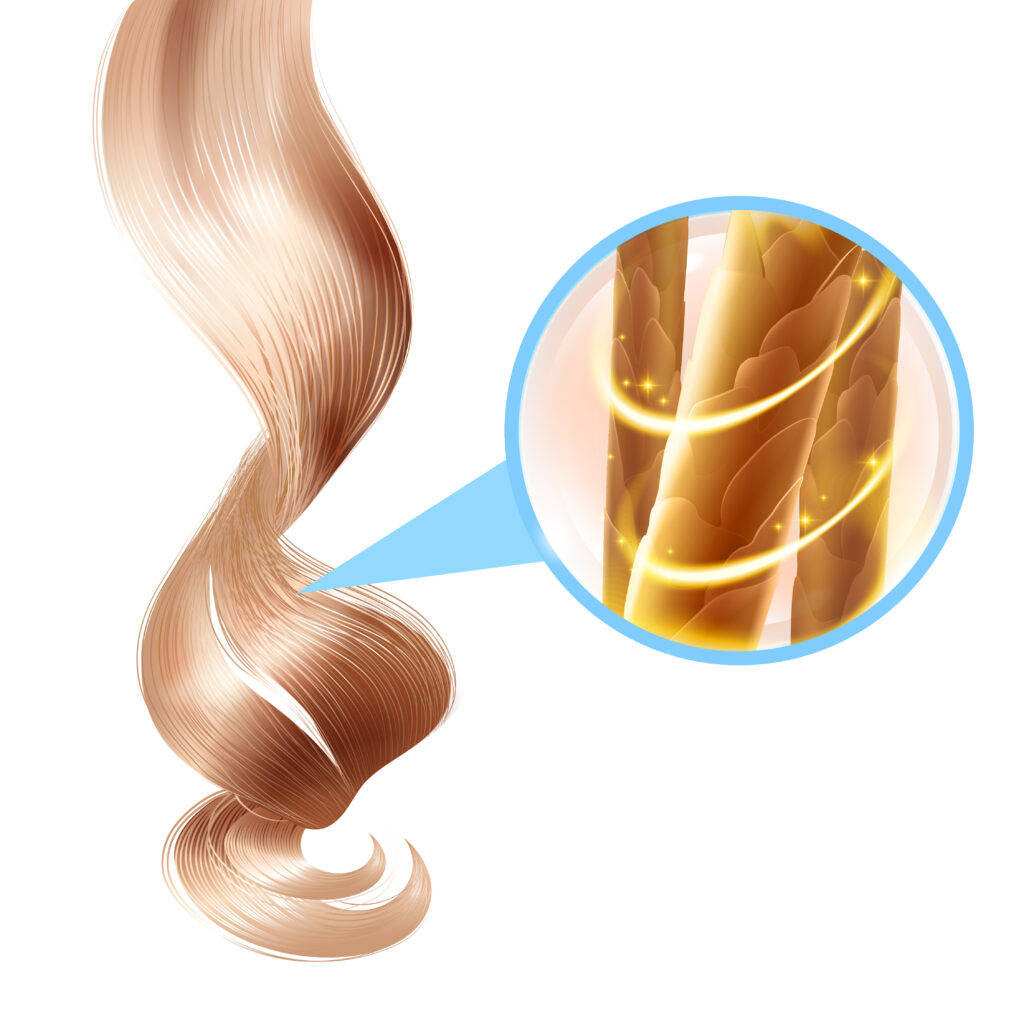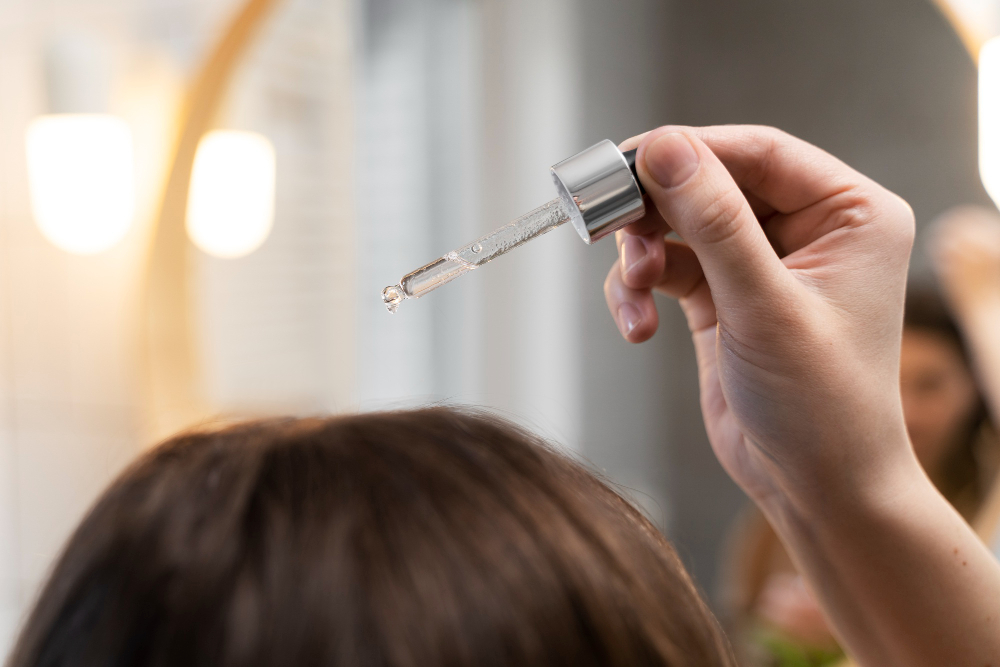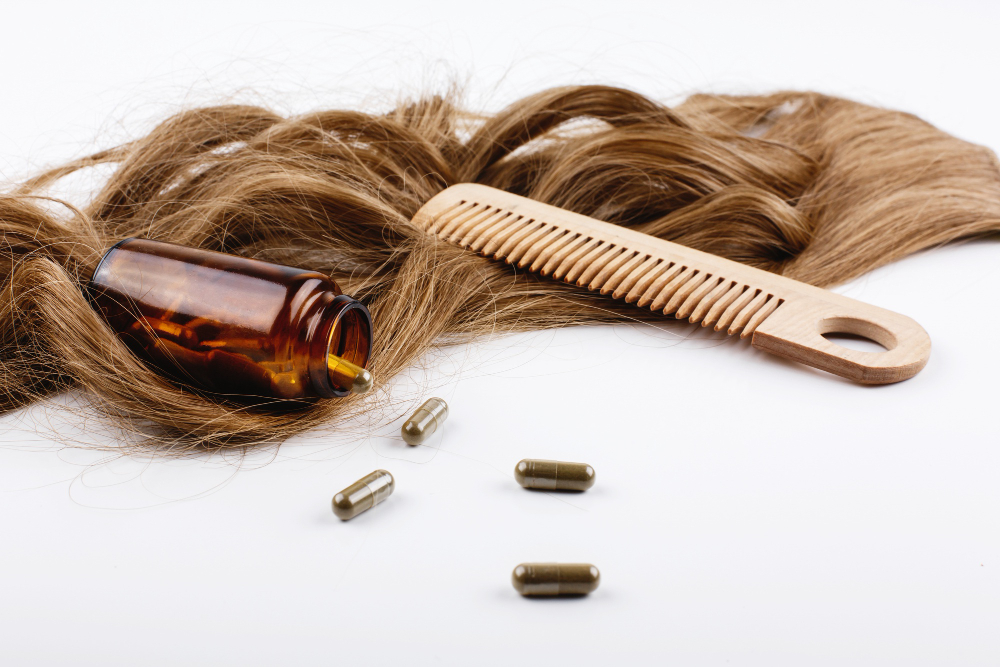You’ve probably wondered why your hair grows faster at times and seems to stall at others. That’s because each strand of hair follows a natural hair growth cycle, which controls how hair grows, rests, and sheds.
Understanding this cycle is the key to preventing hair loss, maximizing growth, and keeping your hair strong and healthy.
By knowing the stages of the hair growth cycle, you can tailor your hair care routine, spot early signs of shedding, and choose treatments that actually work instead of wasting time on trial-and-error solutions.
Understanding the Stages of Your Hair Growth Cycle

The hair growth cycle is the natural process that controls how your hair grows, rests, and sheds over time. Each strand follows a pattern of phases: anagen, catagen, telogen, and sometimes exogen — that determines its length, thickness, and overall health.
By understanding this cycle, you can:
- Recognize normal shedding vs. hair loss
- Tailor your hair care routine for maximum growth
- Choose treatments that match your cycle
- Reduce stress-related hair issues
💡 Research: Studies have shown that understanding the molecular mechanisms of hair follicles can help optimize hair growth strategies.

1. Anagen Phase: Active Growth
What it is: The active growth stage of the hair growth cycle
Duration: 2–7 years
What happens: Hair grows from the follicle, fueled by rapid cell division. Up to 85% of your scalp hairs are in this stage at any given time.
Tips for Anagen Growth:
- Eat protein-rich foods
- Avoid excessive heat styling
- Consider professional treatments
💡 Research: Serotonin can activate dermal papilla cells, potentially boosting growth during anagen.
2. Catagen Phase: Transition
What it is: A Short transitional phase of the hair growth cycle
Duration: 2–3 weeks
What happens: Hair stops growing, and the follicle shrinks, preparing for the resting phase.
Tips:
- Avoid harsh brushing
- Limit chemical treatments
3. Telogen Phase: Resting
What it is: Resting phase of the hair growth cycle
Duration: 2–4 months
What happens: Hair is fully formed but not actively growing. Eventually, it will shed naturally.
🧴 Tips:
- Reduce stress
- Maintain gentle hair routines
- Track shedding
4. Exogen Phase: Shedding
What it is: Sometimes considered a separate stage of the hair growth cycle
Duration: Varies
What happens: Old hair sheds naturally, making room for new growth. Normal shedding is 50–100 hairs per day.
🧴 Tips:
- Track shedding patterns
- Support growth with proper nutrition and scalp care.
What Happens If You Ignore Your Hair Cycle

Ignoring your hair’s natural cycle can lead to frustration when hair grows slowly or falls out unexpectedly. Many people confuse normal shedding with hair loss.
If you don’t understand the cycle, you might:
- Apply DIY treatments that don’t match your hair’s needs
- Mismanage scalp stress
- Miss early signs of hair loss. Check out our article on What Is Hair Loss?
Knowing your cycle helps you time treatments, optimize growth, and reduce unnecessary stress.
Factors That Influence Your Hair Growth Cycle

Your hair growth stages follow a natural process, but internal and external factors can influence how long each phase lasts, how often hair sheds, and the overall health of your strands. When disrupted, you might notice more shedding, slower growth, or thinning hair.
Key Factors:
- Genetics: Determines the length of your Anagen phase, hair texture, and susceptibility to hair loss.
- Hormonal Changes: Pregnancy, menopause, or thyroid fluctuations can push hair into the resting phase, leading to shedding.
- Stress & Emotional Health: Chronic stress can trigger telogen effluvium, disrupting the hair growth cycle.
- Nutrition & Diet: Deficiencies in protein, iron, or biotin can slow growth and weaken follicles.
- Scalp Health: Conditions like dandruff or poor circulation can impair hair growth.
- Medical Conditions & Medications: Autoimmune diseases and certain medications can interfere with the cycle.
- Age: As we age, the Anagen phase shortens, resulting in slower growth and fewer active follicles.
- Hair Care Practices: Excessive heat, harsh chemicals, or tight hairstyles can damage hair and weaken follicles.
🧴 Tip: Supporting your scalp and overall health can help keep your hair cycle balanced and reduce shedding.
Optimizing Your Hair Growth at Haste Urban Hair Spa

At our hair wellness spa, we offer you personalized treatments to support and enhance your natural hair growth:
- Scalp Treatments: Deep cleansing and nourishing treatments to maintain a healthy scalp environment.
- Nutritional Guidance: Advice on diet and supplements that promote hair health.
- Stress Management: Relaxation therapies to reduce stress-related hair issues.
- Customized Hair Care Plans: Tailored regimens based on individual hair and scalp assessments.
Take Control of Your Hair Growth Cycle
Understanding your hair growth cycle empowers you to make wise choices for stronger, healthier hair. Support your follicles during each phase, maintain a balanced diet, manage stress, and use treatments that match your hair’s rhythm to maximize growth and minimize shedding.
💡 Next Step: Book a professional consultation to tailor a regimen to your hair cycle — Book Now.
FAQ
What are the main stages of the hair growth cycle?
The cycle includes Anagen (growth), Catagen (transition), Telogen (resting), and sometimes Exogen (shedding).
How long is the hair growth cycle?
It varies by hair type and genetics, but the Anagen phase lasts 2–7 years, the Catagen phase lasts 2–3 weeks, and the Telogen phase lasts 2–4 months.
Can stress affect the hair growth cycle?
Yes, chronic stress can trigger telogen effluvium, causing temporary increased shedding.
What can I do to support my hair growth cycle?
Focus on nutrition, scalp care, gentle hair practices, stress management, and treatments that align with your cycle









